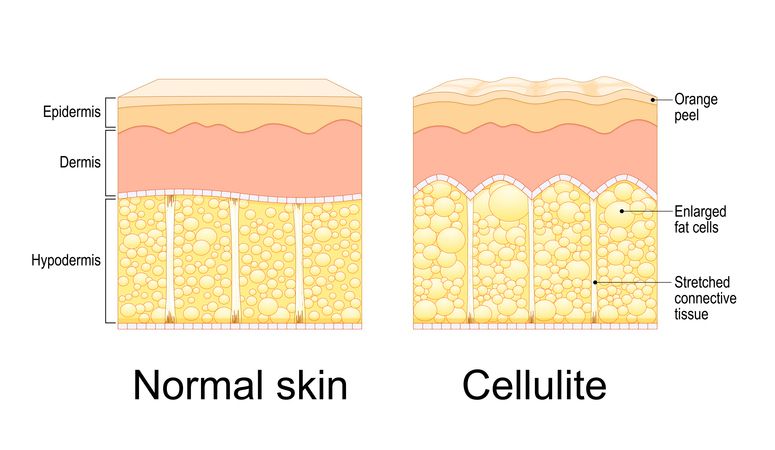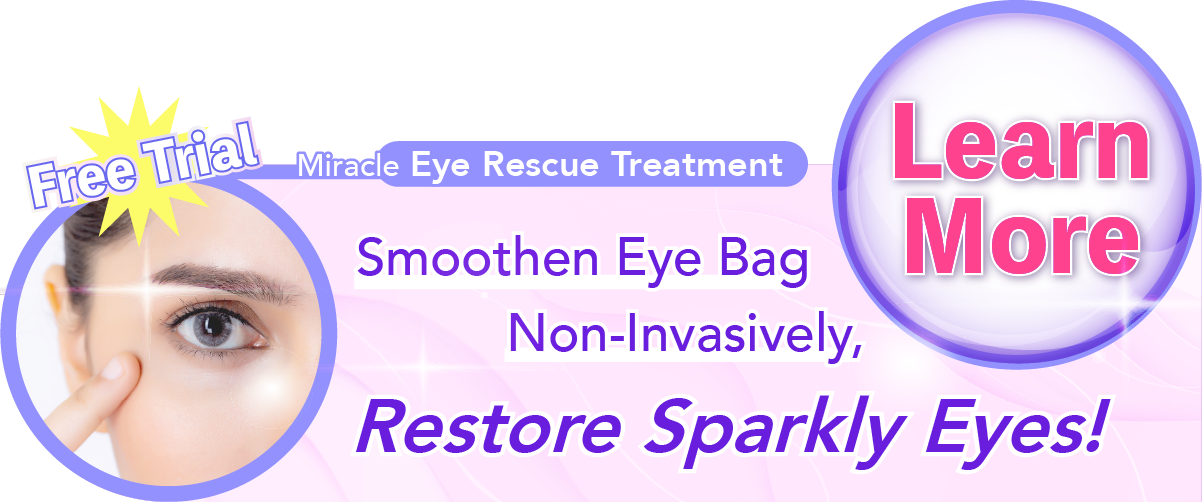
Author: Natalie Ng|Updated: 8 May 2025
If you’ve started seeing puffiness or dark circles under your eyes, there’s usually more than one reason. Eye bags can show up for all kinds of reasons, and most are pretty common. There are eight main things that might be causing them. These include aging and collagen loss, your genes, not drinking enough water, poor sleep, allergies, too much screen time, certain health issues, or just general stress. Some of these, like genetics or thinning skin, are harder to control. But others, like fluid retention or dry skin, are easier to manage with a few changes. The best baggy eye treatment depends on what’s really going on. That might be using a good eye cream, cutting back on salty foods, drinking more water, or getting a bit more sleep. In some cases, things like laser resurfacing or eyelid surgery might be worth considering, especially for excess skin or fat under the eyes. Keep reading to figure out what’s causing your under eye bags and how to treat each one in a way that works for you.

Aging and Natural Collagen Loss
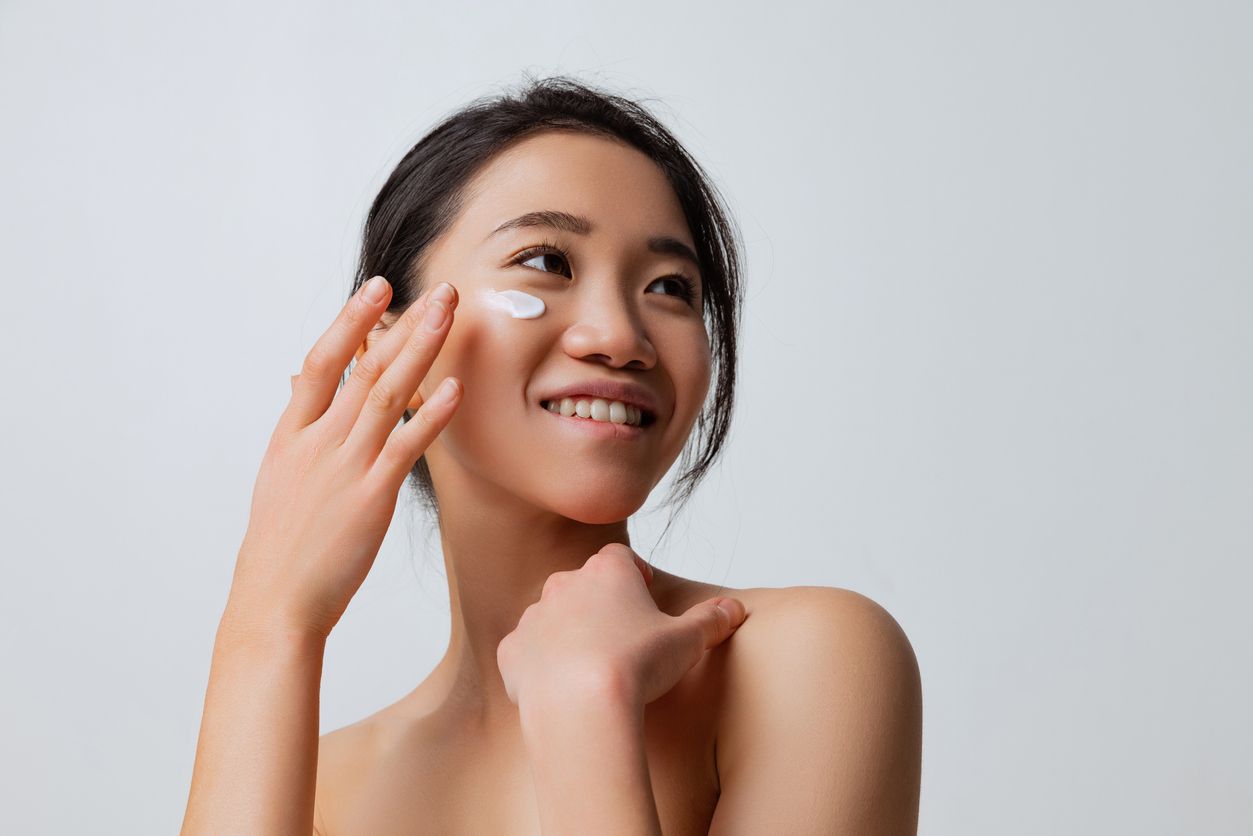
Impact of aging on the under eye area
As you get older, your body produces less collagen. This change affects the under eye area more than most parts of your face because the skin here is thin and delicate. Less collagen means less skin elasticity, which leads to sagging skin around the lower eyelids and upper eyelids. Over time, this causes loose skin, eye puffiness, and under eye bags.
Changes beneath the surface
Fat that usually supports the under eye area can start to shift or push forward. This creates a puffy or swollen look. Muscle tone around the eyes also weakens, and the skin becomes thinner. This makes blood vessels more visible, leading to dark circles and uneven skin tone.
Ways to reduce signs of aging
Daily skincare can help reduce puffiness and smooth the under eye area. Eye creams with hyaluronic acid or vitamin C help improve skin tone and support elasticity. Ingredients like green tea or matcha green tea may help constrict blood vessels and reduce swelling.
For more severe eye bags caused by excess fat or skin, professional treatments like laser resurfacing, chemical peels, or eyelid surgery may be needed for longer-lasting results.

Genetics and Inherited Traits
Impact of inherited features on eye bags
Genetics strongly affect how the under eye area looks over time. If your parents or grandparents had visible under eye bags, you’re more likely to develop them too. This happens because facial structure, fat distribution, and skin thickness often follow family patterns. These traits shape how the skin ages and how puffiness forms beneath the eyes.
Some people naturally have thinner or more sensitive skin, while others are born with less collagen support in the under eye area. These inherited features lead to earlier signs of sagging skin, dark under eye circles, and visible blood vessels.
Facial structure and fat placement
Genetic traits also affect how fat is stored around the lower eyelids. If fat pads in this area are more prominent or positioned closer to the skin’s surface, they can create the appearance of eye bags even at a young age. Loose skin may also form faster if skin elasticity runs low in your family. These factors can lead to eye puffiness even without any lifestyle triggers.
Looking at old family photos can help identify inherited patterns. If eye bags show up in relatives who had healthy habits, chances are your traits are inherited too.
Genetic conditions that affect collagen
Some people inherit rare conditions that affect collagen structure directly. These include Ehlers-Danlos syndrome and Marfan syndrome. Both impact how the body builds and maintains collagen, which weakens the support system under the eyes.
People with these conditions may see signs like sagging skin, excess skin around the lower eyelids, or puffy eyelids early in life. These signs may also come with joint flexibility or other body-wide symptoms. In such cases, eye bag removal may require medical treatment or guidance from a healthcare provider.
Book Now to Experience
Miracle Eye Rescue Treatment
1 Minute Self-Registration
Date should not be before minimal date

Dehydration and Salt Imbalance
Effect of hydration and sodium on eye puffiness
Fluid retention is one of the most common causes of under eye bags. When the body doesn't get enough water or when salt intake is too high, it holds onto fluid. This extra water often collects in the under eye area, where the skin is thin and the tissue is soft. That’s why eye puffiness and swollen lower eyelids are often more noticeable after a salty meal or a day with too little water.
During sleep, the body stays in a flat position for several hours, which makes fluid pool under the eyes. This is why puffiness is usually worse in the morning. People who eat too many salty foods or drink very little water may see this swelling more often or more severely.
Role of daily habits in fluid retention
Skipping water throughout the day or relying heavily on processed foods can make the problem worse. Canned soups, frozen meals, chips, and sauces are packed with sodium. High salt levels pull water into the tissues, which makes swelling more visible under the eyes.
Staying hydrated helps reduce puffiness and improve skin tone. Spread your water intake evenly across the day instead of drinking large amounts all at once. Try to limit salt intake in the evening to reduce morning eye bags. This habit also helps reduce the appearance of dark under eye circles and prevents dry skin.
At home remedies like a cold compress or cold spoon may help reduce swelling for a few minutes, but they won’t prevent fluid retention caused by high salt or low hydration. A healthy diet and enough water are more effective long-term.

Sleep Deprivation and Poor Rest
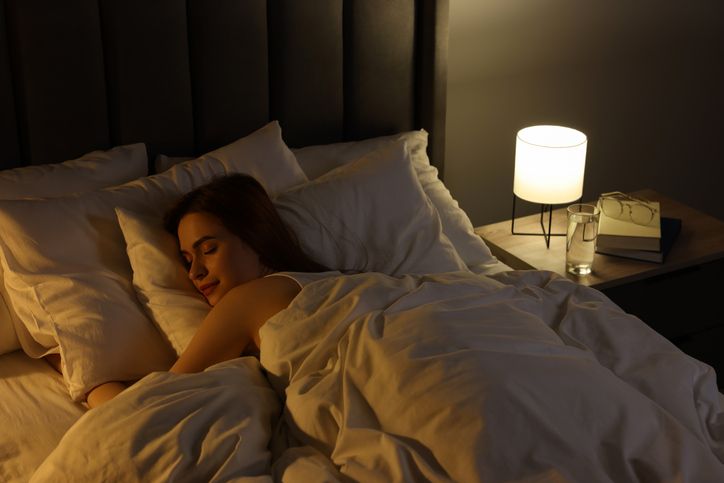
Impact of poor sleep on the under eye area
Lack of sleep affects how your under eye area looks and feels. During rest, the body works to repair skin and balance fluids. Without enough sleep, this process slows down, and fluid begins to collect under the eyes. This leads to puffy eyelids, dark circles, and swelling that often worsens over time.
Poor rest also affects blood flow. Slower circulation makes blood vessels under the skin more visible, especially in people with thinning skin. This adds to the appearance of under eye circles and uneven skin tone.
Changes in skin function during sleep loss
When the body doesn’t get proper sleep, it produces more cortisol—a stress hormone that can break down collagen and elastin. This weakens the structure of the under eye area and leads to sagging skin and fine lines. It also reduces the skin’s ability to hold moisture, making dry skin and dullness more noticeable.
Missing sleep also affects the lymphatic system, which helps remove waste and extra fluid from tissues. When this system slows down, fluid builds up beneath the eyes and makes eye puffiness more pronounced.
Daily habits to support better rest
A steady sleep schedule can help reduce the appearance of bags under the eyes. Aim for seven to nine hours of rest each night and avoid screen time before bed, as blue light can interfere with your natural sleep cycle. Small changes like dimming lights at night, avoiding caffeine late in the day, and keeping a cool room temperature can also support deeper rest.
If you consistently wake up with under eye bags, try elevating your head slightly while sleeping. This can help reduce fluid pooling in the lower eyelids overnight and support smoother appearance in the morning.

Allergies and Sinus Issues
Effect of allergic reactions on under eye swelling
Allergies often cause swelling and puffiness around the under eye area. When you're exposed to allergens like pollen, dust, pet dander, or mold, your body releases histamines. These chemicals dilate blood vessels and trigger inflammation, leading to fluid buildup beneath the eyes. This creates visible eye bags and puffy eyelids, especially during allergy season or in dusty environments.
Rubbing itchy or watery eyes can stretch delicate skin and make dark circles or sagging skin worse. This added pressure can also weaken the under eye area over time, leading to more noticeable puffiness.
Impact of sinus congestion on eye bags
Sinus pressure affects the tissues surrounding the eyes. When sinuses become inflamed or blocked, fluid can build up and reduce lymphatic drainage. This results in swollen lower eyelids and a heavier appearance around the eyes.
Chronic sinus issues, such as long-term congestion or frequent infections, may lead to repeated inflammation that affects the blood vessels under the skin. This can contribute to dark under eye circles and a tired look that doesn't go away easily.
Managing allergic puffiness
Using prescription allergy medication or over-the-counter antihistamines can reduce inflammation and help prevent fluid retention. Keeping your environment clean, especially bedding and air filters, may reduce allergen exposure. Cool compresses can help constrict blood vessels and reduce swelling for a few minutes, but managing the allergy itself is key to long-term relief.
For people with sensitive skin, it’s important to avoid harsh skincare products during allergy flare-ups, as these may increase irritation or dryness around the under eye area.
Book Now to Experience
Miracle Eye Rescue Treatment
1 Minute Self-Registration
Date should not be before minimal date

Lifestyle Habits and Screen Time
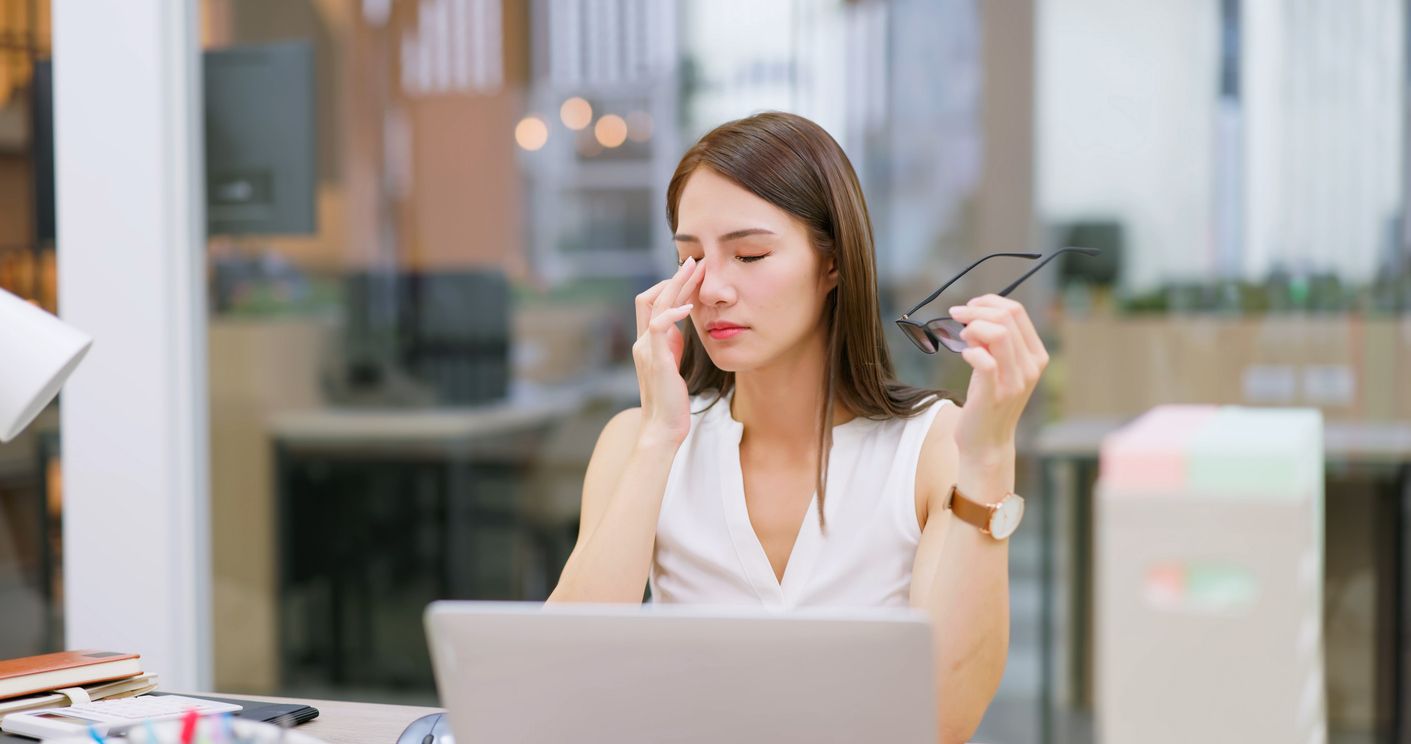
Effect of daily habits on under eye bags
Your lifestyle plays a direct role in the appearance of the under eye area. Habits like poor posture, lack of movement, dehydration, and irregular sleep schedules all contribute to fluid retention and puffiness. These daily routines affect circulation, which can slow down lymphatic drainage and make swelling more visible around the eyes.
Using certain skincare products or wearing makeup for long hours—especially if not removed properly—can also irritate the under eye area. This irritation may lead to inflammation, especially in people with sensitive skin.
Eye strain from screen time
Long hours in front of screens reduce the natural blink rate. Blinking helps keep the eyes moist and supports proper lymphatic flow. When blink rate drops, fluid builds up and leads to puffy eyes, especially around the lower eyelids.
Screen use can also disrupt your sleep cycle. Blue light affects melatonin production, which delays sleep and shortens rest time. Poor sleep adds to eye puffiness and may worsen dark circles. Looking down at screens for long periods can also slow blood flow around the eyes due to poor neck and head posture.
Habits that reduce screen-related puffiness
Take regular screen breaks—about every 20 minutes—and keep screens at eye level to avoid posture-related pressure. Drinking enough water and staying active during the day also supports circulation and helps reduce puffiness. Use eye cream with lightweight texture and natural ingredients to keep the area hydrated, especially if your skin is dry or exposed to long screen hours.

Medical Conditions and Medications
Health-related causes of under eye swelling
Some medical conditions affect fluid balance, skin tone, and tissue support around the eyes. Hypothyroidism can slow the body’s metabolism and cause fluid retention, leading to persistent eye puffiness. Kidney issues may also cause swelling in the face, including the under eye area, due to impaired filtration and water retention.
Autoimmune disorders that affect connective tissue, such as lupus or dermatomyositis, can reduce skin elasticity and lead to sagging skin or loose skin around the lower eyelids. These changes may appear gradually or suddenly, depending on how the condition progresses.
Medication effects on the under eye area
Certain medications can increase fluid retention or thin the skin. These include corticosteroids, blood pressure drugs, and some hormone therapies. Long-term use may result in visible puffiness, dark under eye circles, or uneven skin tone. These changes often remain even after adjusting skincare routines.
Some allergy medications may help reduce eye bags caused by inflammation, but others can lead to dry skin, which may make under eye circles look worse in people with sensitive skin.
When to seek medical treatment
If eye bags appear suddenly or come with other symptoms like facial swelling, fatigue, or vision changes, speak with a healthcare provider. Treating the underlying medical condition is often the most effective way to reduce swelling and restore smoother appearance around the eyes.
In some cases, cosmetic procedures may help with long-term effects, such as laser resurfacing for thinning skin or eyelid surgery for excess skin or fat.

Stress and Hormonal Changes
Impact of stress on the under eye area
High stress levels affect the skin and tissues around the eyes. When the body produces more cortisol—a stress hormone—it can lead to fluid retention, poor circulation, and breakdown of collagen. This weakens the structure of the under eye area and causes puffiness, dark circles, and sagging skin.
Stress also affects sleep quality, which further slows skin repair and increases blood vessel visibility under the eyes. These changes often make eye bags more noticeable, especially in people with delicate skin or thinning skin.
Role of hormonal fluctuations
Hormonal changes during menstruation, pregnancy, or menopause can shift how the body holds fluid. These shifts may lead to under eye swelling or a tired look that doesn’t fully go away with rest. Estrogen levels also influence collagen production, so when hormones drop, skin elasticity decreases and the under eye area may appear more hollow or puffy.
Some people also experience darker under eye circles or uneven skin tone during hormone changes due to increased sensitivity or pigmentation shifts.
Managing hormonal and stress-related puffiness
A regular sleep schedule, hydration, and a healthy diet can help reduce fluid retention linked to stress or hormones. Eye creams with hydrating hyaluronic acid or vitamin C may support skin tone and reduce the appearance of puffiness. At home remedies like cold compresses can help constrict blood vessels and reduce swelling temporarily.
If eye bags become more severe during certain times of the month or alongside other symptoms, consider speaking with a healthcare provider to assess hormone levels or explore further treatment options.
Book Now to Experience
Miracle Eye Rescue Treatment
1 Minute Self-Registration
Date should not be before minimal date

Miracle Eye Rescue Treatment
Targeted support for stubborn eye bags
If lifestyle changes and home remedies aren’t giving you the results you want, Miracle Eye Rescue Treatment offers a non-invasive option to reduce eye bags, dark circles, and fine lines. It’s especially helpful for people dealing with fluid retention, excess fat, or sagging skin around the lower eyelids and upper eyelids — common issues that don’t always respond well to basic skincare or eye cream.
This treatment combines triple-wavelength radiofrequency (RF) energy with red and blue light therapy. Together, they reach deep into the skin layers to boost microcirculation, stimulate collagen production, and break down excess fat that collects under the eyes. The result is a smoother appearance, reduced puffiness, and brighter under eye area.
How it works
The treatment begins with a layer of cooling gel applied to the under eye area. RF energy then penetrates all layers of the skin to improve blood flow and help the lymphatic system clear out fluid retention. At the same time, red and blue light work on breaking down excess fat and reducing the appearance of dark under eye circles.
The heat from RF also encourages new collagen production, which helps lift sagging skin and support thinning areas. With each session, the treatment helps improve skin elasticity and reduce swelling without causing damage or discomfort.
Key advantages
• Reduces bags under the eyes by targeting excess fat and water retention
• Improves dark circles by boosting circulation and fading melanin buildup
• Smooths out fine lines through collagen stimulation
• Suitable for most skin types, including sensitive skin
• No downtime required — you can return to your usual routine right after the session
• Safe alternative to eyelid surgery or other surgical treatments
If you're looking for a baggy eye treatment that’s safe, effective, and delivers visible results, Miracle Eye Rescue Treatment may be the right choice. It supports the results of daily skincare and helps reduce puffiness and dark spots more effectively than home remedies or basic eye serum alone.
Book the Miracle Eye Rescue Treatment today and find out how this treatment can help improve your under eye area.Book Now to Experience
Miracle Eye Rescue Treatment
1 Minute Self-Registration
Date should not be before minimal date
FAQ
1. Can wearing makeup make under eye bags worse?
Yes, wearing makeup around the under eye area can sometimes make eye bags more noticeable, especially if the product settles into fine lines or clings to dry skin. Heavy concealers may highlight puffiness instead of hiding it. It’s best to use products with a lightweight texture and hydrating ingredients. Always remove makeup gently to avoid stretching the delicate skin or irritating blood vessels under the eyes.
2. Do home remedies like cold spoons or green tea bags really help reduce puffiness?
Cold compresses like chilled spoons or green tea bags can reduce swelling for a few minutes by constricting blood vessels and calming inflammation. While they won’t remove excess fat or tighten loose skin, they may help reduce puffiness short-term. Green tea contains antioxidants and natural ingredients that can soothe sensitive skin and improve the appearance of tired eyes temporarily.
3. Is eye bag removal possible without surgery?
Yes, several non-invasive treatments, including radiofrequency-based options like the Miracle Eye Rescue Treatment, can reduce the appearance of under eye bags without surgery. These methods target fluid retention, excess fat, and sagging skin using energy-based or light-based technology. While not as dramatic as eyelid surgery, consistent sessions can lead to noticeable improvements in skin tone, collagen production, and eye puffiness.
4. Why do my under eye bags look worse in the morning?
Under eye bags often appear more pronounced in the morning due to overnight fluid retention. When lying down, gravity causes fluids to settle around the eyes, especially in people who eat salty foods before bed or don’t get enough sleep. Puffy eyes can also be linked to dehydration or poor lymphatic drainage. Elevating your head slightly while sleeping and drinking enough water during the day can help reduce morning swelling.
5. Can certain foods help reduce dark circles and puffiness under the eyes?
Yes, a healthy diet plays a role in skin appearance and eye puffiness. Foods rich in vitamin C, antioxidants, and hydrating properties support skin health and may reduce the appearance of dark circles and eye bags. Limiting salt intake helps prevent fluid retention, while staying hydrated improves skin tone and elasticity. Matcha green tea, leafy greens, and citrus fruits are commonly recommended for their skin-boosting benefits.
Recommended Articles
COPYRIGHT© NEW BEAUTY MANAGEMENT LIMITED 2025. ALL RIGHT RESERVED.

